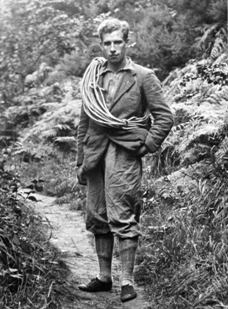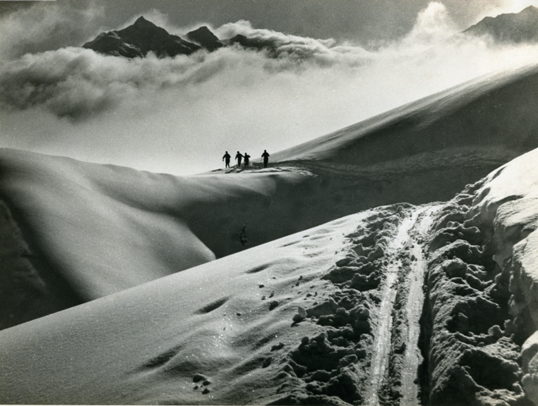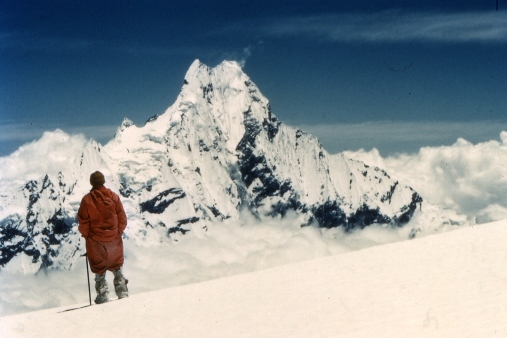
The Wayfarers' Club History
 |
| Colin Kirkus |
Founded in Liverpool in 1906, The Wayfarers are proud to be among that select group of senior clubs that led the development of British mountaineering during the early years of the sport. The original objects of the club - "to promote the pursuits of walking and climbing" - have not changed during the succeeding century or so; mountain adventure was fun then and it is fun today.
After a shaky start (you had to be pretty eccentric to seek artificial challenges in those tougher days) and the devastating impact of the First World War, the club absorbed the membership of another local group, the Hobnail Club, and its future became assured. Liverpool was, after all, ideally situated halfway between Snowdonia and the Lake District. There had always been the problem, however, of where to stay on reaching the hills - neither expensive hotels nor scattered farmhouses being ideal. In 1930 the club, with the help of a generous donation, bought a derelict cottage in Langdale and developed it into the first - and still considered by many to be the best - climbing hut in the Lakes, the Robertson Lamb Hut. Henceforth, members arriving at RLH (as the hut is universally known) on a rainy night could be assured of a roof, a bed, a cosy fire and congenial company. With the Climbers' Club and the Rucksack Club having established huts in North Wales, reciprocal rights were soon mutually agreed, so that members could base themselves in either mountain area - an arrangement still happily valid today.
 |
| Harry Spilsbury's wonderful shot of ski-touring in the 1930s. Allan Stuart collection |
During the 1930s, the club produced some notable climbers. Colin Kirkus, AB Hargreaves, John Menlove Edwards and Bill Tilman were prominent, pioneering new routes both locally and in the Himalaya. The first climbing guide to Helsby Crags appeared in an early Wayfarers' Journal, while Harry Spilsbury's guide to climbing in the little-known Lofoten Islands was still the primary reference forty years later! The Himalayan impetus resumed after WW2, with Charles Evans (deputy leader of the successful 1953 Everest expedition) and Dennis Davis (first ascent of Nuptse, 1961) prominent, and it continues today. Our member Stuart Peacock has recently climbed Everest, Cho Oyu and then Everest a second time - making Stu the first British Climber to summit Everest twice by the North ridge.
The Wayfarers have never, however, been the preserve exclusively of hard men. It is one of the delights of mountaineering that anyone can have an adventure, and the rabbit is at least as likely to do so as the tiger. If your big day consists of scrambling around the Snowdon Horseshoe or a walk along the Langdale skyline that's fine, the only criterion is a love of the mountains. Neither, incidentally, do you have to be from Liverpool. Although, for historical reasons, the centre of gravity is Merseyside, members now live in all parts of the UK and beyond.
 |
| Dennis Davis admiring Machapuchare (22,938ft) |
Until the AGM of 2018 the club maintained the men-only membership rule with which almost all the senior clubs were founded. It was a subject that was debated and voted on numerous times over the years not quite reaching the 75% voting majority required by the club constitution. At the AGM on 24th November 2018 the amendment of "All references in these Rules to the masculine gender shall be interpreted as including the feminine gender" was approved with 84% being in favour of the change. In practice, however, life at the hut had been almost always mixed. Since 1981 members' wives, lady friends and female members of kindred clubs have been cordially welcomed on every day of the year, even the traditional men only weekends had been mixed for some years.
An innovation of which the Wayfarers are justly proud is the concept of the "catered" meet. At official meets (about 20 per year) it has become the custom for the organiser to provide and cook for those attending - usually the Saturday evening dinner but sometimes all meals - during the weekend. These meets are held either at RLH or at huts belonging to kindred or other clubs.
We are proud of our history. But, of course, it is the future that matters. On the strength of the situation today, we can look forward to our second century as a club of congenial mountain-lovers with great confidence.